Student Army Training Corp, Flagstaff Hill, 1918
‘Camp Carnegie’ Drilled in Trench Digging, Grenade Throwing During WWI
In recognition of the 100th anniversary of the Nov. 11, 1918 agreement that ended fighting in World War I between the Allies and Germany, Carnegie Mellon University Libraries exhibit "A Pair of Soldier Shoes" takes a look back at campus life during WWI. The exhibit, located in Hunt Library's first floor exhibit cases, runs through February 2019 and features objects and photographs from the University Archives' World War I Collection.
The United States entered the war on April 6, 1917 and U.S. troops began arriving at the Front in 1918. While many Americans had been participating in the preparedness movement since the sinking of the Lusitania in 1915, there was a need to drastically grow the size of the Army. Military camps sprang up around the country to train new officers. The Carnegie Institute of Technology hosted one of those camps, converting its entire academic apparatus into a machine of war.
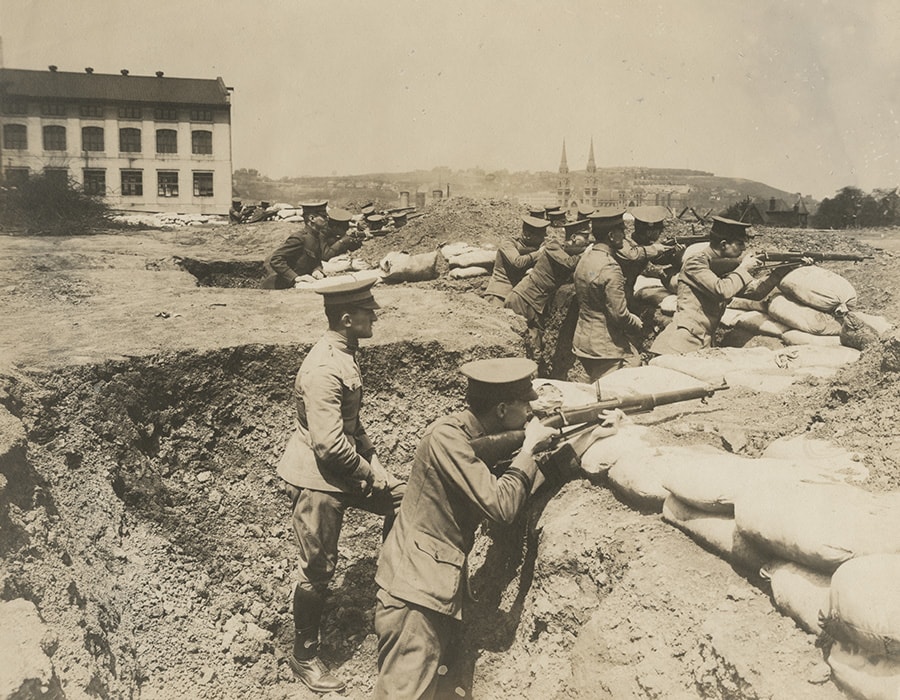
As part of their military training, students dug trenches in Schenley Park and participated in rifle exercises.
Military training at CIT combined both physical and academic preparedness. At "Camp Carnegie" students were drilled in marching, trench digging, and grenade throwing.
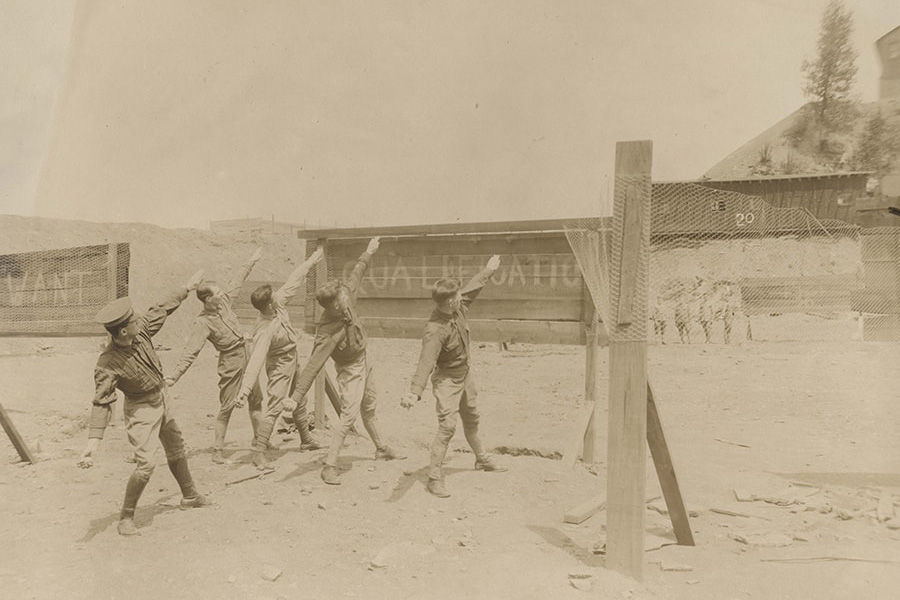
"Camp Carnegie" students practiced grenade throwing.
On campus, students were trained as radio mechanics, stenographers, telegraphers, truck drivers and band musicians. War Courses were also introduced for women in topics like mechanical drafting and occupational therapy.
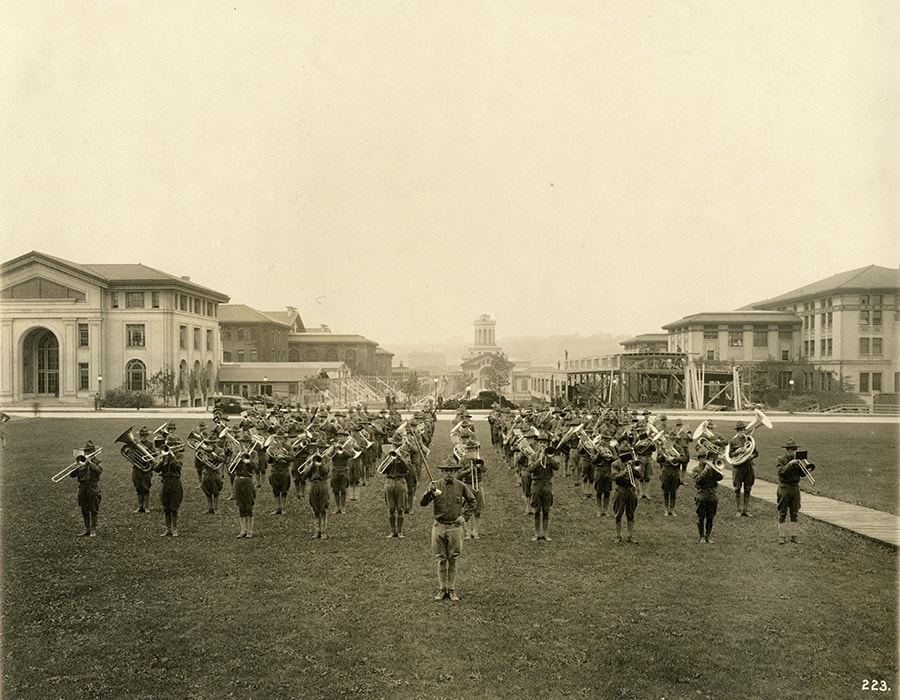
Carnegie Tech also offered war courses for band musicians.
The training camp at Carnegie Tech was short-lived, but for that small window of time it fundamentally changed the lives of its students and teachers. The physical changes it brought to campus lasted well into the 1950s, when Langley Aeronautics Laboratory (which later served as a dining hall called Skibo Inn) was torn down to make way for Hunt Library.
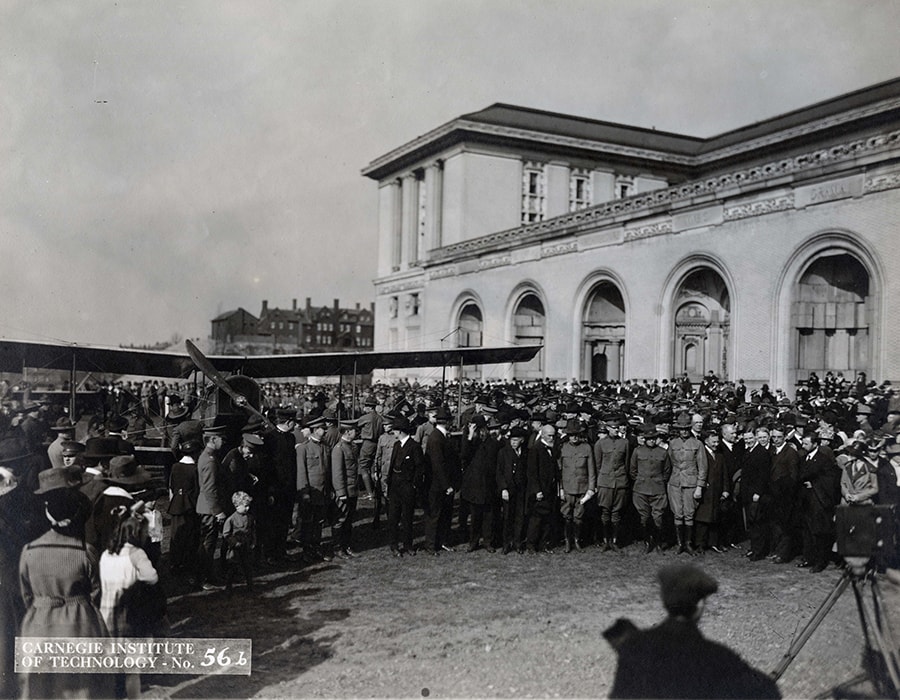
A plane was on display outside of the College of Fine Arts for the opening of the Langley Aeronautics Lab, 1918.
Students dealt with the reality of war in a variety of ways. Many women joined a campus chapter of the American Red Cross, while others trained to be nurses. Men in service wrote letters and poetry to try to make sense of the war. Haniel Long, a member of the English faculty, collected many of these letters and poems and published them as The Soldier's Progress and Carnegie Tech War Verse in 1918.
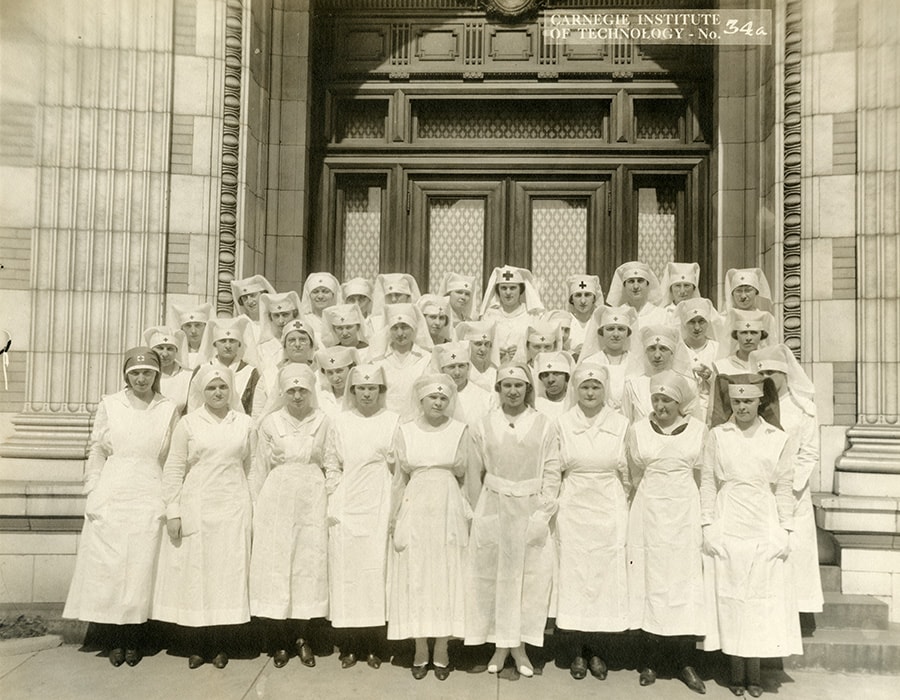
Students dealt with the reality of war in a variety of ways. Many women joined a campus chapter of the American Red Cross, while others trained to be nurses.
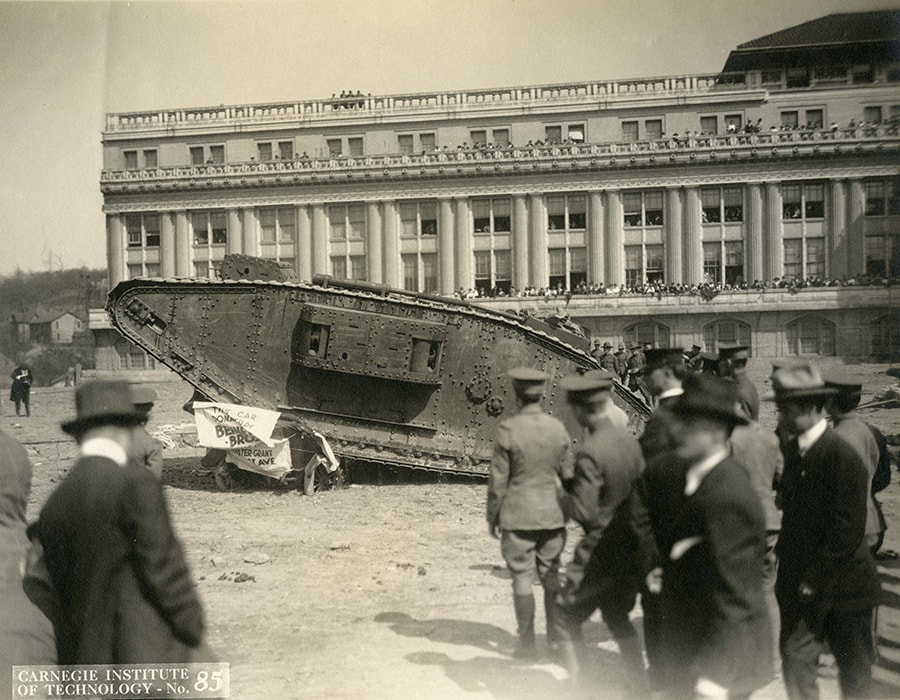
Students line the balconies of Margaret Morrison to view a demonstration by “Tank Britannia.” The tank arrived in Pittsburgh in April 1918 and was escorted from Shadyside Station to campus by ROTC members. While on campus the tank climbed the side of the cut, demolished trenches prepared by students, and completed several “stunts” — including crushing a car.
When the armistice was announced on Nov. 11, 1918, over 3,000 students were participating in military training at Carnegie Tech. At the end of the war, there were an estimated 8.5 million military casualties. 320,000 of them were American.
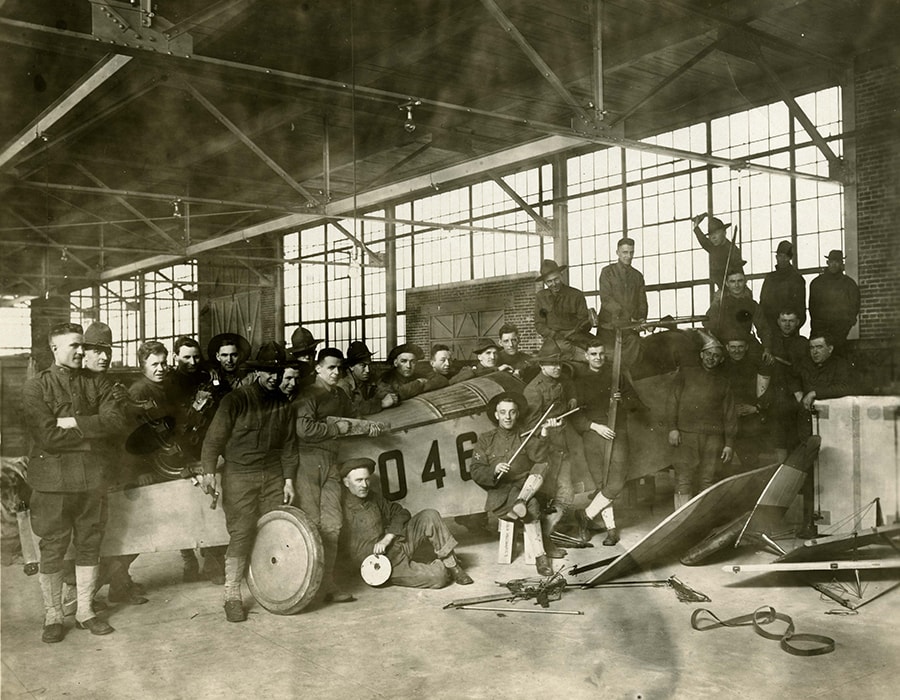
Students in the Air Service School for Radio Mechanics celebrate the declaration of armistice on Nov. 11, 1918. Most of their training took place in the Langley Laboratory of Aeronautics, which stood where Hunt Library stands today.
While the list is known to be incomplete, approximately 900 Carnegie Tech students, alumni, and faculty served during World War I. At least 44 students died in service. The first was Walter Crellin, a design student who was on the Tuscania when it was torpedoed by a U-boat off the northern coast of Ireland on Feb. 5, 1918. The last known death was Arthur H. McGill, a science student who died of pneumonia in France on Feb. 2, 1919.